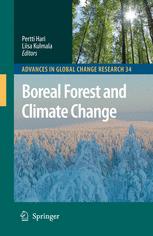

Most ebook files are in PDF format, so you can easily read them using various software such as Foxit Reader or directly on the Google Chrome browser.
Some ebook files are released by publishers in other formats such as .awz, .mobi, .epub, .fb2, etc. You may need to install specific software to read these formats on mobile/PC, such as Calibre.
Please read the tutorial at this link: https://ebookbell.com/faq
We offer FREE conversion to the popular formats you request; however, this may take some time. Therefore, right after payment, please email us, and we will try to provide the service as quickly as possible.
For some exceptional file formats or broken links (if any), please refrain from opening any disputes. Instead, email us first, and we will try to assist within a maximum of 6 hours.
EbookBell Team

4.8
44 reviewsAn active co-operation between forest ecologists and physicists has continued for decades at the University of Helsinki. These scientists have the common vision that material and energy fluxes are the key to a proper understanding of natural phenomena. The authors of this book come from very different disciplines: tree ecophysiology, silviculture, aerosol physics, meteorology, soil science, chemistry, microbiology, botany and applied electronics. However, the shared vision has resulted in coherent research which crosses the disciplinary bounders and has produced an integrated programme covering a range of temporal and spatial scales.
The measurements at two long-term stations SMEAR I and II have been designed to study material and energy fluxes over forests at two geophysical locations. The result is a unique data set, providing insights into the climatological control of the carbon cycle in coniferous forests of northern Europe. The analysis starts from the space and time element level and is extended via ecosystems to boreal forests. The predictive power of the several theories proposed is high.
There are several crucial feedbacks from forests to the climate system. The mechanisms for those feedbacks are elaborated in the book: they involve changes in the carbon cycle, albedo, N2O emissions and the production of aerosols. Much of this work is new and the feedback relationships have not yet been incorporated into models of the climate system.
The book will be an important introduction for students and climate modellers alike, providing conceptual tools and ideas that are broadly applicable to terrestrial systems